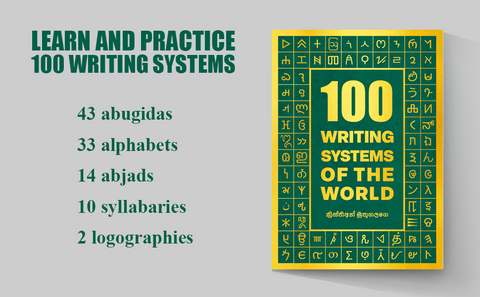The Enigmatic Bamum Script: Unraveling the Hidden African Writing System
1. Script type: The Bamum script, also known as A-ka-u-ku, is a syllabic script. It belongs to the category of syllabaries, where each character represents a syllable rather than individual sounds. The Bamum script combines consonant and vowel symbols to form syllabic units, making it unique and distinct in its writing system.
2. Writing direction: The Bamum script is written from left to right, following the same direction as many Western scripts like English. The characters are connected, creating a flowing and visually distinctive writing style.
3. Creator and invention time: The Bamum script was created by King Njoya, also known as Sultan Ibrahim Mbouombouo, during the late 19th century in the Kingdom of Bamum, located in present-day Cameroon. King Njoya's vision was to develop a script that would preserve the Bamum language and culture.
4. Historical usage: The Bamum script was widely used during the reign of King Njoya in the late 19th and early 20th centuries. It served as a script for administrative purposes, royal correspondence, literature, and cultural documentation within the Bamum Kingdom.
5. Population and usage area: The Bamum script is primarily used by the Bamum people, an ethnic group residing in the Grassfields region of Cameroon. The exact number of people actively using the script today is unknown, but efforts are being made to revitalize its use among the Bamum community.
6. Languages associated: The Bamum script is associated with the Bamum language, a Bantu language spoken by the Bamum people. It was primarily used to write Bamum texts, preserving their cultural heritage and historical records.
Interesting Facts:
-
Complex character design: The Bamum script features intricate and geometrically inspired characters. The symbols are often composed of multiple elements, including curves, angles, and dots, resulting in a visually captivating writing system.
-
Cultural significance: The Bamum script played a crucial role in preserving the oral traditions, historical accounts, and cultural practices of the Bamum people. It became a symbol of their identity and a means to assert their linguistic and cultural distinctiveness.
-
Script as a political tool: King Njoya strategically developed the Bamum script as a means to strengthen the Bamum Kingdom and assert its autonomy during a time of European colonial influence in Africa.
-
Revitalization efforts: In recent years, there has been a renewed interest in the Bamum script, with efforts to promote its use and recognition. Initiatives include teaching the script in schools, publishing literature, and digitizing the script for wider accessibility.
-
UNESCO Intangible Cultural Heritage: In 2020, the Bamum script was inscribed on the UNESCO Representative List of the Intangible Cultural Heritage of Humanity, acknowledging its cultural significance and the importance of its preservation.
Unveiling the Bamum script: The Bamum script stands as a testament to the rich cultural heritage and linguistic diversity of the Bamum people. Its unique design and historical significance provide a glimpse into the intricate tapestry of African writing systems and the resilience of indigenous languages.

Practice Bamum and other scripts with our book "100 Writing Systems of the World"!
Discover 100 diverse writing systems from around the globe in one captivating book. Practice writing different scripts with full character charts and essential information provided. Let your imagination soar on the blank right pages as you explore 43 abugidas, 33 alphabets, 14 abjads, 10 syllabaries, and 2 logographic scripts. Dive into numeral systems and even design your own writing system. Immerse yourself in the beauty and diversity of global scripts today with "100 Writing Systems of the World." Unleash your creativity and order now!
